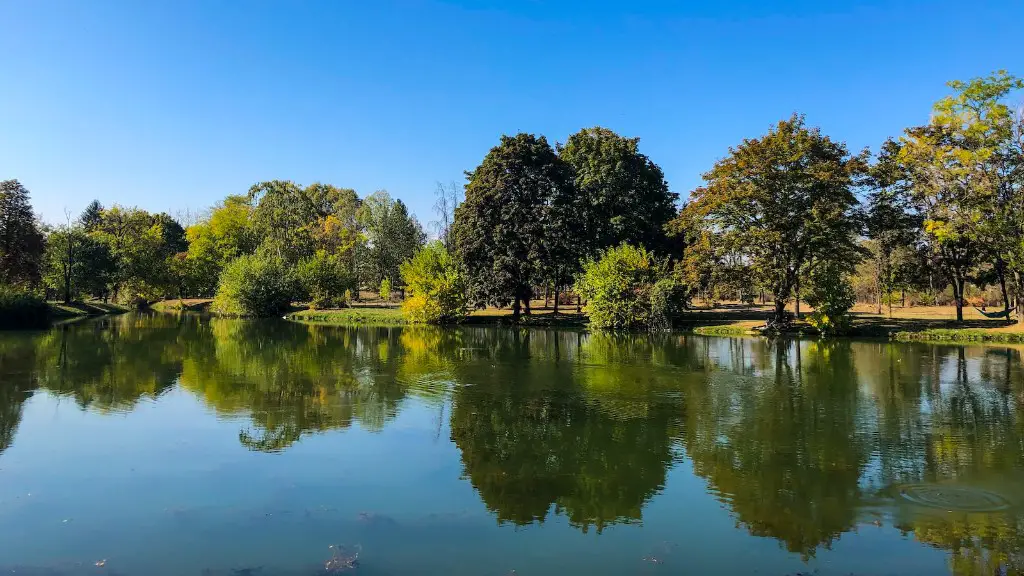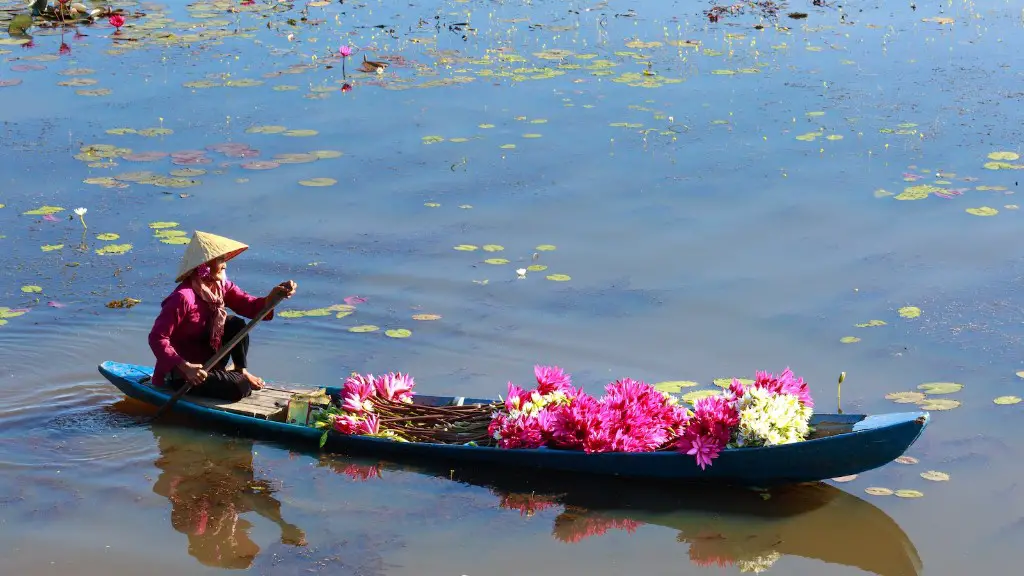Overview
Lake Superior is the largest of the Great Lakes and the largest body of freshwater in the world. It is home to an incredibly diverse range of fish species and provides an important habitat for both native fish populations and migratory species.Understanding the fish populations and habitats in Lake Superior is critical to its health and conservation, as well as to the success of recreational and commercial fisheries.
Fish Population and Migration Patterns
The population of fish in Lake Superior changes over time, and many species migrate between lakes to find suitable food and habitat. Species such as lake trout, walleye, whitefish, and round whitefish can all be found in Lake Superior. Also present in the lake are perch, northern pike, muskellunge, burbot, congopers, slimy sculpin, smelt, and various minnows. Lake herring are of particular interest as they are a native species and important in both recreational and commercial fisheries.
Many of the fish that call Lake Superior home migrate seasonally or yearly. Walleye and lake trout can be found in deep water during the summer and move near shore to spawn during the winter. The lake herring have a complex migratory pattern, with some populations staying in Lake Superior and other populations migrating to other Lakes.
Threats to Fish in Lake Superior
As with other bodies of water, Lake Superior’s fish are facing numerous threats. Overfishing, habitat destruction, invasive species, and pollution are all taking a toll on the fish populations. Many of the threats are caused by human activities, such as overfishing, habitat destruction, and pollution. This can have drastic impacts on the Lake’s health and on the fish populations.
Invasive species can cause changes to the food web and competition with native species. Species such as round goby, alewife, and sea lamprey are present in the lake and can cause displacement of native species. Pollution and habitat destruction can also harm fish populations. Many of the chemicals and runoff from roads and farms can enter the lake, affecting the quality of the habitat and the health of the species.
Conservation and Management of Fish Resources
Managing fish resources is key to ensuring the health of Lake Superior and its fish populations. Conservation efforts have included reducing pollution, stocking fish, and restoring habitat. Laws and regulations, such as fishing limits and catch limits, have also been implemented for protection and sustainability.
The Fish and Wildlife Service of Minnesota and Wisconsin have established numerous programs to monitor and manage fish resources. For example, stocking helps to replenish the fish populations in the lake and also provides additional sources of food and shelter. Additionally, significant research has been done to better understand the Lake’s fish populations and how best to protect them.
Recreational Fishing
Fishing is a popular recreational activity in Lake Superior, with many sport and charter fishing businesses located on and around the lake. There are many opportunities for anglers to catch different species. Fishing in the lake can be a rewarding experience, as many of the fish are very large and can put up quite a fight.
It is important for anglers to be aware of the different regulations in effect and to practice catch and release of vulnerable populations such as lake trout and lake herring. There are also numerous species such as smelt and whitefish that are only catchable during certain times of the year and must be released during other times.
Economic Impact of Fish in Lake Superior
The fish population in Lake Superior has an important economic impact. The recreational fisheries in the lake provide a livelihood for many businesses and generate significant income for the local economy. Fishing is also an important tradition and cultural activity for the people of the region, further highlighting the economic importance of the lake’s fish species.
Commercial fisheries also take advantage of the lake’s fisheries, harvesting fish such as lake herring, whitefish, and lake trout. These species are often found in high abundance and provide an important source of income for the local communities.
What This Means For Future of Lake Superior’s Fish Populations
Given the importance of Lake Superior’s fish populations, it is critical that the health of the lake’s fish populations is maintained. Various management and protection efforts are needed to ensure the sustainability of the lake’s fisheries. Education and increased awareness of the importance of the fish resources of Lake Superior is also key to increasing protection and conservation.
Although the fish populations in Lake Superior have faced many threats, it is reassuring to see that various efforts are being taken to protect and manage the fish resources of the lake. With continued efforts and vigilance, we can ensure that fish populations remain healthy and that the lake’s fisheries can remain vital and productive.
Impacts of Climate Change on Lake Superior’s Fish
The effects of climate change are felt by all parts of nature and as such, fish species in Lake Superior are impacted as well. Warmer temperatures can lead to a decrease in the amount of oxygen in the lake which can decrease the amount of suitable habitat for the fish. Another major impact of warmer temperatures on Lake Superior is the earlier arrival of invasive species which could have a devastating effect on the balance of the lake’s fish populations. Increased amounts of runoff from precipitation will also lead to an increase in pollutants which can impact the health of the lake’s fish as well.
Effects of Recreational Fishing on Fish Populations in Lake Superior
As recreational fishing is a popular activity in Lake Superior, understanding the effects of this activity on the fish populations is important. Recreational anglers can impact the fish populations through overfishing, habitat destruction, and the introduction of invasive species. It is important that anglers practice responsible fishing with regards to catch limits and the use of proper gear and techniques. Additionally, anglers should always take care to release fish back into the water properly and if possible, practice catch and release techniques.
Conclusion of Environmental Initiatives
The protection and conservation of Lake Superior’s fish resources is critical to its health and vitality. Various environmental initiatives have been taken to reduce the impact of human activities on the aquatic system. Measures such as pollution control, habitat restoration, stocking, and regulations have proven to be very successful in preserving the quality of the habitat and improving the abundance of fish species.
It is hoped that these initiatives can continue to be successful in protecting Lake Superior’s fish resources and that, in doing so, we can ensure the continued health and productivity of this great lake for many generations to come.


